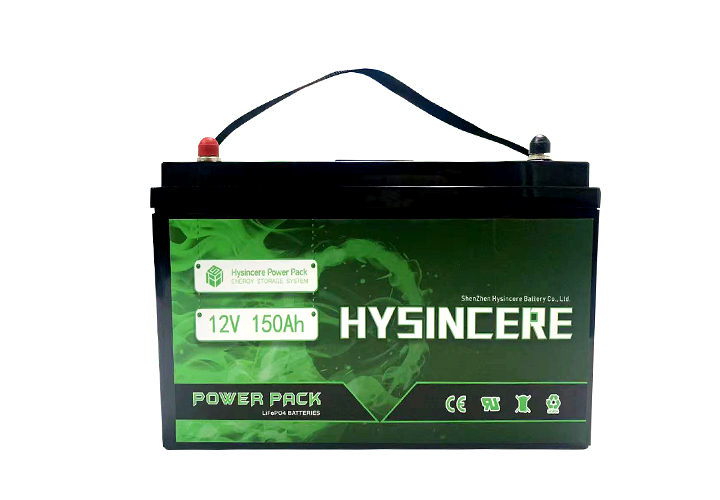source:other news
release time:2023-03-27
Hits:0
Popular:

1. Organic solvent
Organic solvents are the main part of the electrolyte, and the performance of the electrolyte is closely related to the performance of the solvent. The solvents commonly used in the electrolytes in lithium ions are carbonate (EC), carbonate (DEC), carbonate (DMC), carbonate ethyl ester (EMC), etc., and generally do not use carbonate (PC ), Ethylene glycol dihalin (DME), etc., is mainly used for solvents for lithium battery. PC is used for secondary batteries. The graphite negative electrode compatibility with lithium -ion batteries is very poor. During the charging and discharge process, the PC is decomposed on the surface of the graphite negative electrode. At the same time, it causes the graphite layer to peel off, resulting in a decline in the cycle performance of the battery. However, a stable SEI film can be established in EC or EC+DMC composite electrolytes. It is generally believed that the hybrid solvents of EC and a chain -shaped carbonate are excellent electrolytes for lithium ion batteries, such as EC+DMC, EC+DEC, etc. The same electrolyte lithium salt, such as LIPF6 or LIC104, the PC+DME system always shows the worst charging and discharge performance (relative to the EC+DEC, EC+DMC system). But not absolute, when PC and related additives are used for lithium -ion batteries, it is conducive to improving the low temperature performance of the battery.
Organic solvents must be strictly controlled before use. If the purity is required to be more than 99.9%, the moisture content must reach 10*106. The oxidation potential of an organic solvent with a close connection between the solvent and the stable voltage is about 5V. The oxidation potential of the organic solvent is of great significance to studying preventing batteries from overcharging and safety. The strict control of the moisture of organic solvents has a decisive impact on formulating qualified electrolytes.
The water drops to 10*106 can reduce the decomposition of LIPF6, slow down the decomposition of the SEI membrane, and prevent gas.
The method of using molecular sieve adsorption, normally pressure or decompression distillation, and interulxitance of inert gas can make the moisture content meet the requirements.
2. Electrolytic lithium salt
LIPF6 is the most commonly used electrolyte lithium salt and is the direction of the development of lithium salt in the future. Although the laboratory also uses electrolytes such as LICLO4, LiasF6, etc., because the high temperature performance of the battery using LIC104 is not good, plus LIC10: It is easy It is not suitable for large -scale use of lithium ion batteries.
LIPF6 is stable on negative electrode, large discharge capacity, high conductivity, small internal resistance, fast charging speed, but extremely sensitive to water and HF acid, easy to react, and can only operate in a dry atmosphere (such as gloves that are less than 20x10 in the dry atmosphere (such as environmental water less than 20x10 gloves. Inside the box), and it is not resistant to high temperature, a decomposition response occurs at 80 ° C ~ IO0 ° C, which generates five fluoride phosphorus and lithium fluoride, and it is difficult to purify. Therefore, when preparing the electrolyte, the self -decomposition and solvents caused by the lipf6 dissolved heat and the solvents should be controlled. break down. Domestic LIPF percentage content can generally meet the standards, but the HF acid content is too high and cannot be directly used to prepare electrolytes, which must be purified. In the past, LIPF6 relied on imports, but now some manufacturers in China can also provide good quality products, such as Shantou Jinguang Hi -Tech Co., Ltd., Tianjin Chemical Design Research Institute, Shandong Fei City Xingtai Chemical Plant, etc. The quality of LIPF6 produced abroad is better. It is prepared into an electrolyte. The content of moisture and HF acid is stable, and the electrolyte will not become sticky.
Read recommendations:
lithium batteries for boats Factory
High Temperature Lithium Battery 18650 26650 Cell
Unleashing Power: The Benefits of 150Ah Lithium Batteries

Last article:The difference between lithium ion battery and lithium polymer battery.lithium batteries for solar panels Manufacturing
Next article:Precautions for drone batteries.lithium batteries for solar panels manufacturer
related suggestion
lithium boat batteries direct sales
2023-04-07lithium deep cycle marine battery maker
2023-03-22solar powered battery pack wholesaler
2023-03-20lithium trolling motor battery price
2023-03-22lithium golf cart batteries direct sales
2023-03-22lithium ion golf cart batteries
2023-03-2212v deep cycle battery
2023-05-08best rv deep cycle battery
2023-05-0824 volt marine battery
2023-05-08portable power station for camping
2023-05-08portable power station 1000w
2023-05-08home solar battery system
2023-05-08Hysincere 500W Portable Power Station Solar Powered
2022-09-0914650 Lithium Ion Battery for Electric Toothbrush
2023-02-14Cleaning Car Electric Vehicle 12.8V 150Ah 200Ah 12V LiFePo4 Battery Pack
2023-02-0915S 48V 100Ah LiFePo4 Battery for Home Energy Storage Solar System
2023-06-19Medical Equipment Cylindrical Lithium Ion Battery 3.7V
2023-02-14The difference between lithium battery and lead -acid battery.lithium batteries for boats Manufacturing
2023-03-28What are some ways to extend the life of your home battery?
2022-10-28Unleashing Power: The Benefits of 150Ah Lithium Batteries
2025-03-21How to preserve 48V lithium iron phosphate battery?
2022-11-22Polymer lithium -ion battery charging.lithium deep cycle marine battery manufacture
2023-04-19Why is mostly a polymer battery?lithium power station wholesale
2023-03-31How to scrap the FPV battery?
2023-02-22High capacity battery.marine battery for trolling motor
2023-03-13How to Pay Attention to the Storage of UPS Batteries.12v 100ah battery price
2023-08-25Advantages of lithium iron phosphate battery.lithium golf cart batteries
2023-07-03